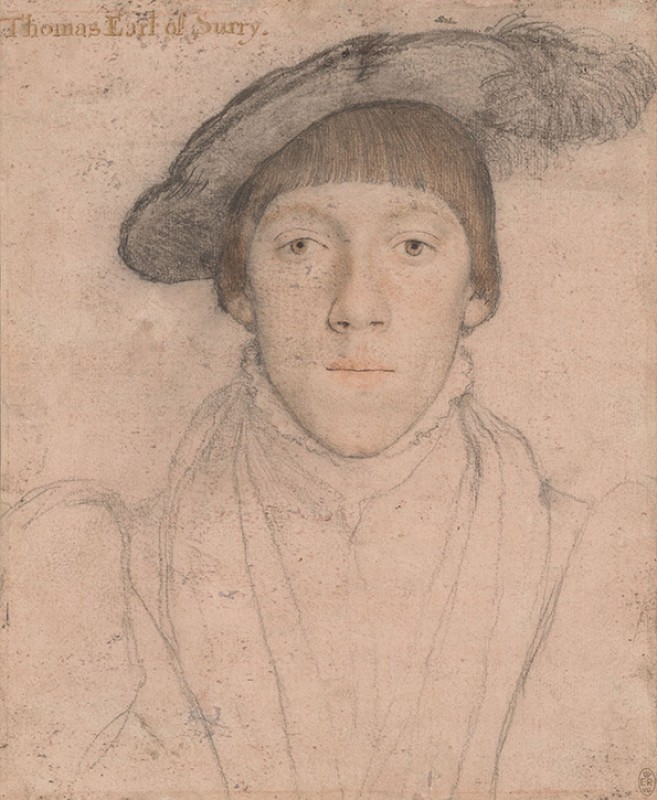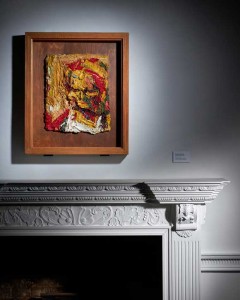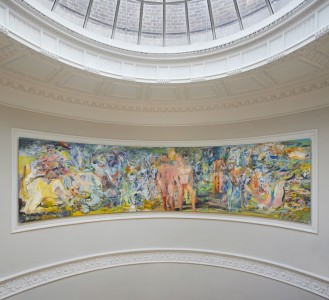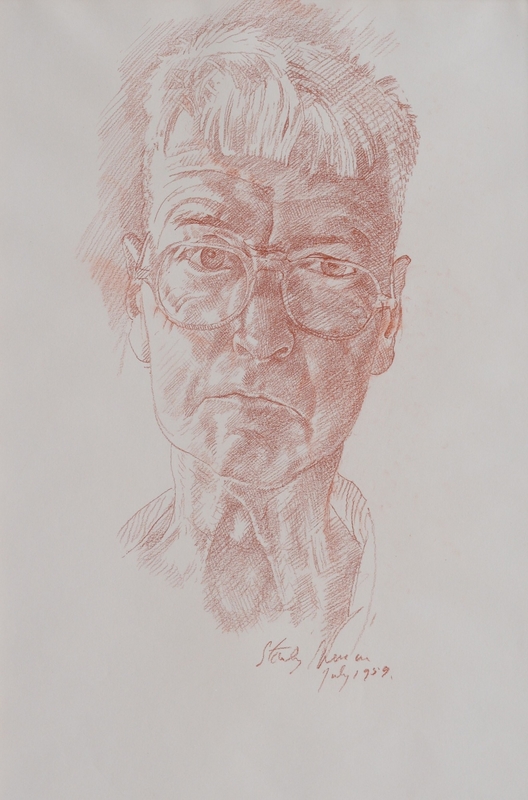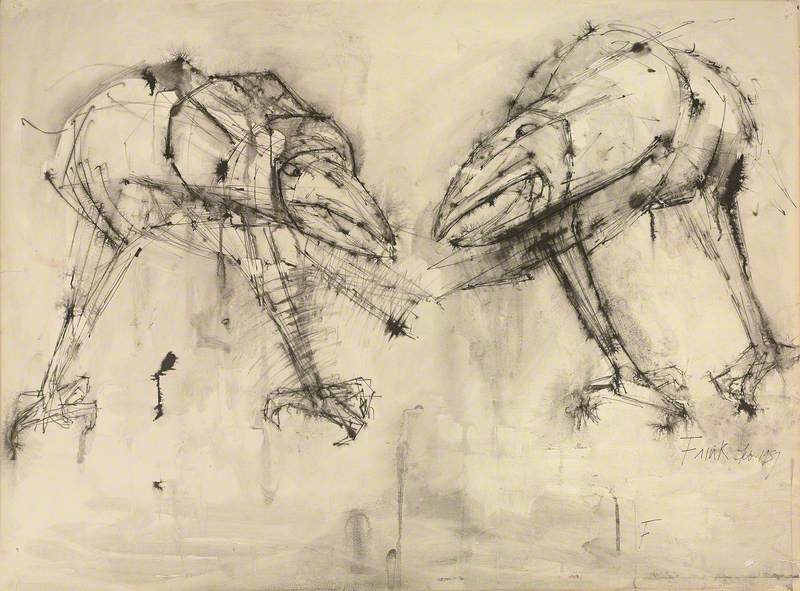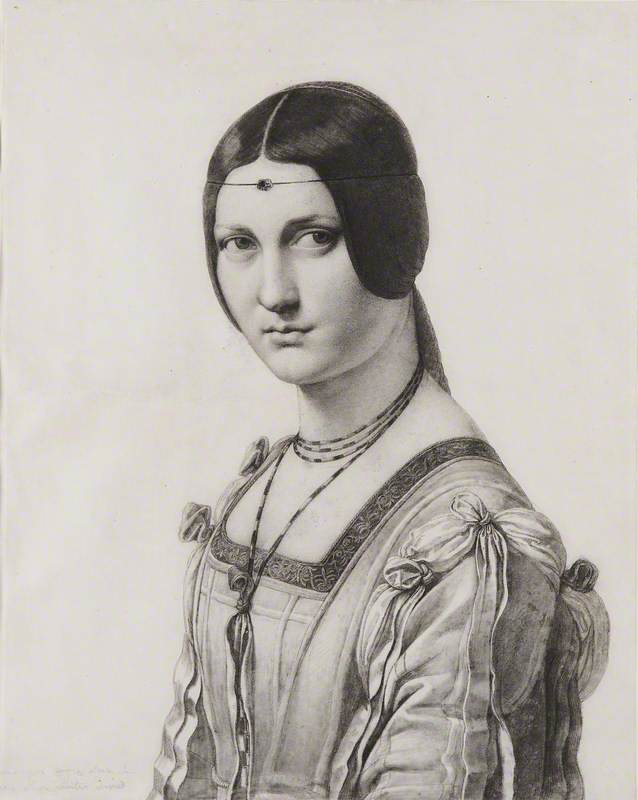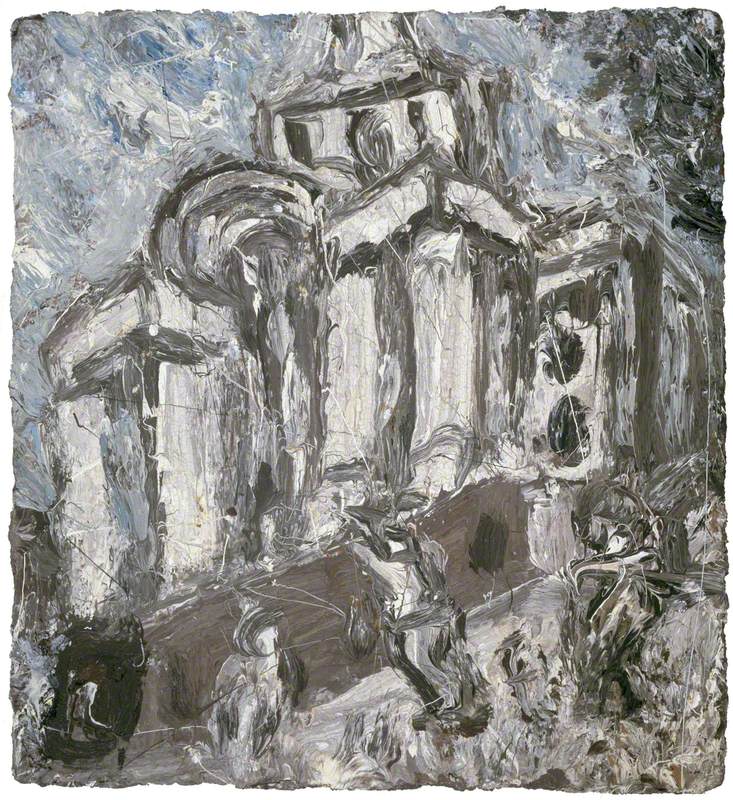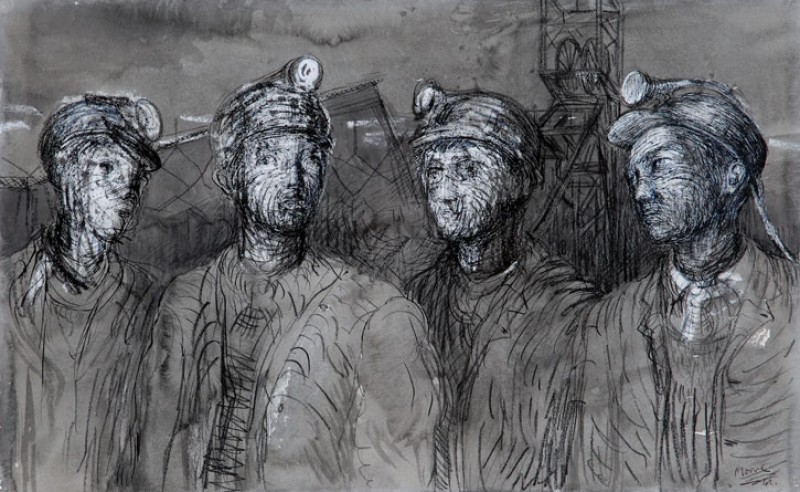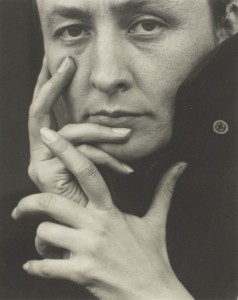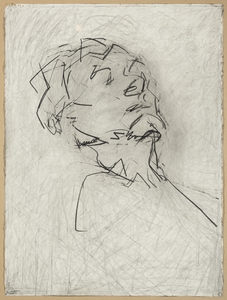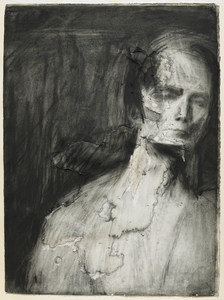'Drawing seems independent of time. Nobody could mistake a twenty-first-century painting for a fifteenth-century painting […] a drawing is a drawing. It hasn't changed.' – Frank Auerbach
When Frank Auerbach (b.1931) moved to London in 1947, he started visiting The National Gallery. He would sit in front of the paintings and draw them, establishing new creative pathways for each subject on paper. This creative routine was developed while under the supervision of his teacher at London Polytechnic, David Bomberg. It marked the beginning of Auerbach's belief that drawings could go somewhere else, beyond paintings. Even his drawings explicitly labelled as preparatory studies reserved the right to move out of their 'before' status and engage with Auerbach's paintings before and after their completion.
Study for 'Mornington Crescent, Summer Morning II'
2004
Frank Helmuth Auerbach (b.1931) 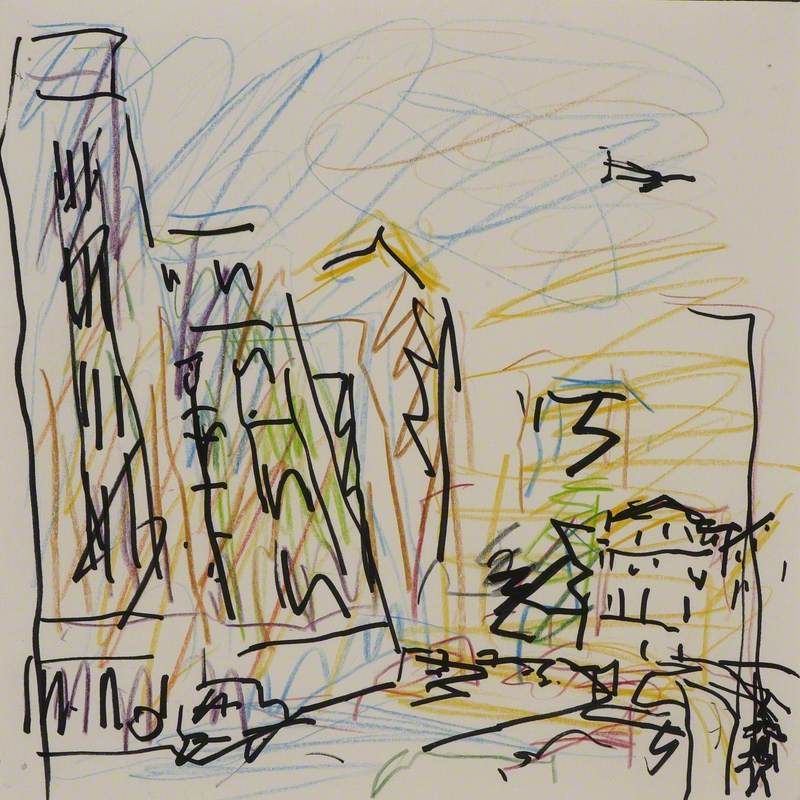
Drawing for Mornington Crescent Painting
1972
Frank Helmuth Auerbach (b.1931) 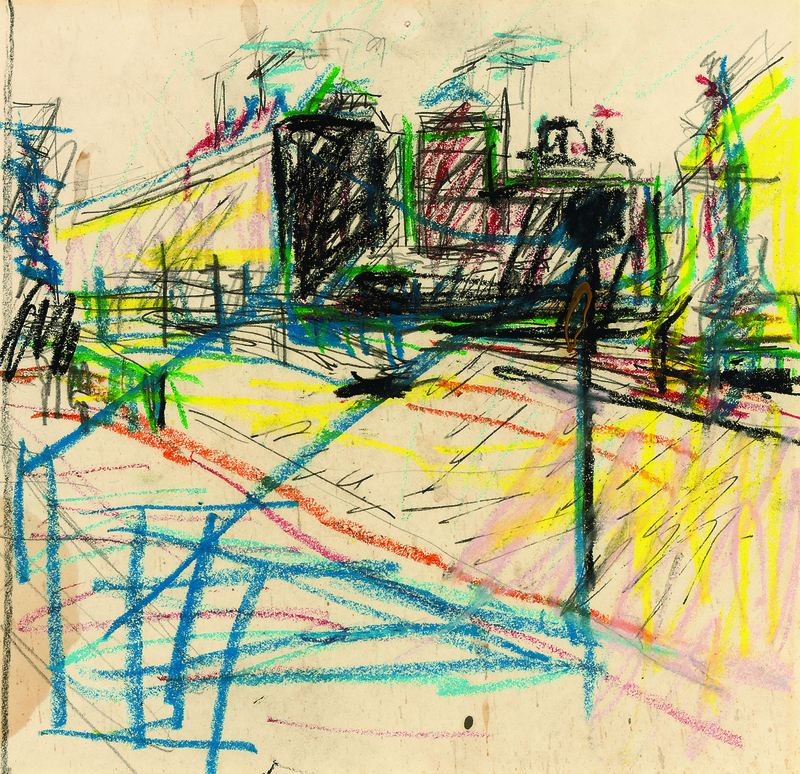
Auerbach's drawings of Mornington Crescent are typical of the studies he would pin to his studio wall for the entirety of the painting process. They hold authority not just as inspiration pieces, but as guides and critics during and after the event of painting. Touching but resisting obsolescence, they stand in relation but not in deference to Auerbach's paintings.
Head of Leon Kossof
1957, charcoal & chalk on paper by Frank Auerbach (b.1931), private collection 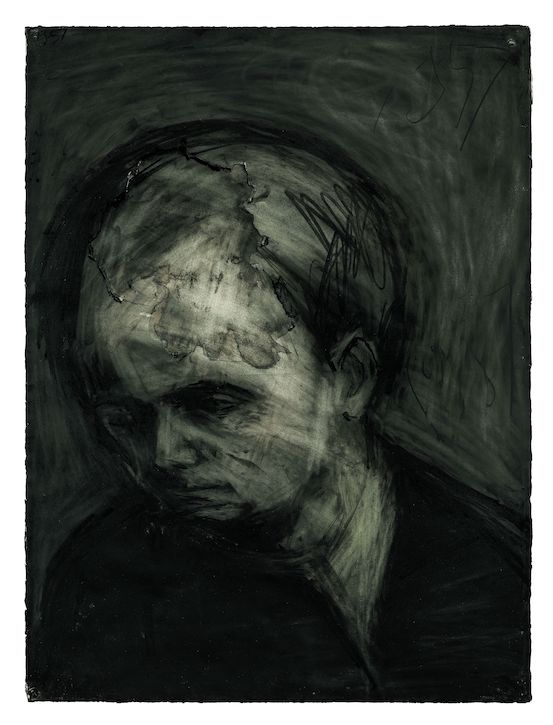
Now, a collection of Auerbach's charcoal drawings of people, produced around the same time as his visits to The National Gallery, is currently on display at the Courtauld Institute, London. The exhibition features two drawings of Leon Kossof, one of Auerbach's contemporaries at St Martin's School of Art, who also enjoyed Bomberg's teaching.
Kossof is an apt subject for work that demonstrates the immense technical dexterity, intuition and commitment to the form taught by Bomberg. In the achievement of the charcoal portraits, any future tendency we might have to diminish drawings to simple, preparatory things – somehow fixed in inferiority to more important paintings – is checked.
Head of Gerda Boehm
1961, charcoal and chalk on paper, by Frank Auerbach (b. 1931), private collection 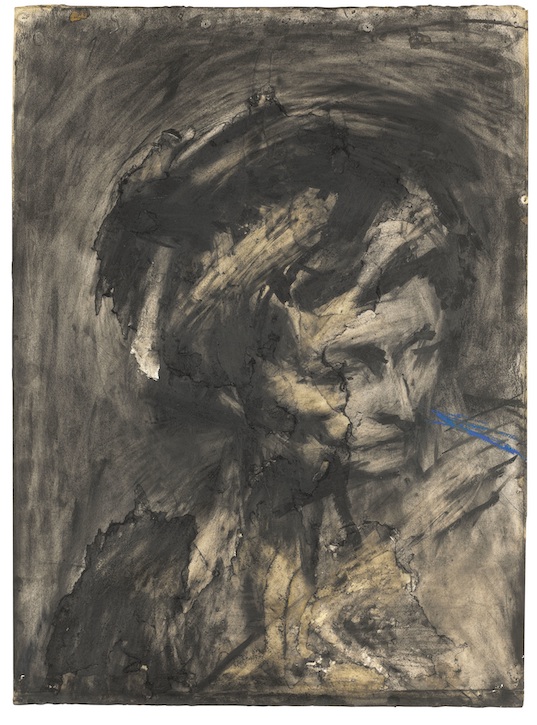
Alongside the charcoal portraits, the exhibition holds several oil paintings of the same sitters. While the paintings may be assessed in relation to the drawings, Auerbach's system with charcoal does not envy his system with paint. It stands confidently alone as a producer of theatrical pictures which can move those who witness them. In a recent interview, he said 'I had the courage to wipe things out, I would draw and next time rub it out, so gradually I freed myself from the thick paint.'
Head of Julia II
1960, charcoal & chalk on paper by Frank Auerbach (b.1931), private collection 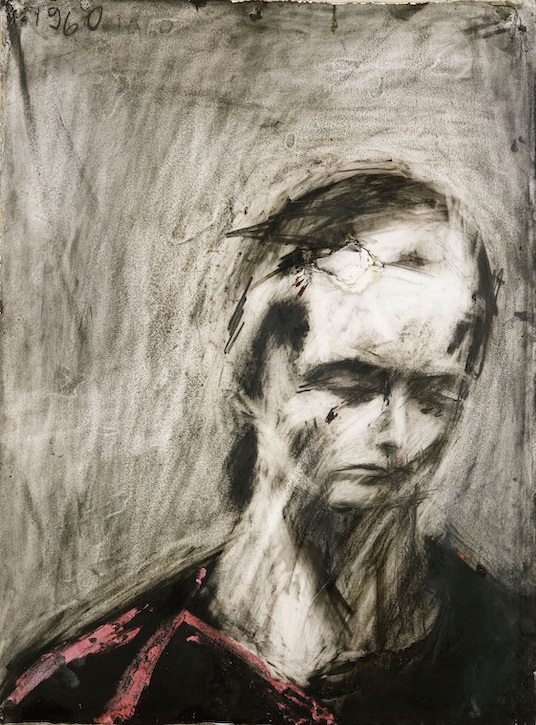
Auerbach started his creative career acting in plays. Although he ultimately retired to his studio in Mornington Crescent, he has never abandoned his love for performance and theatrical design. His drawing process is founded on an instinct for design, direction and acting. Casting those who were very well known to him in his small sitting ensemble, Auerbach worked in continual dialogue. As two actors in a play might improvise responses to each other around the framework of their lines, Auerbach works close-up with his sitters, improvising responsive gestures in the application and erasure of charcoal and chalk. They are, in essence, dramatic pictures. Each one captures the sitter going somewhere, in thought or speech.
Head of Helen Gillespie II
1962, charcoal & chalk on paper by Frank Auerbach (b.1931), private collection 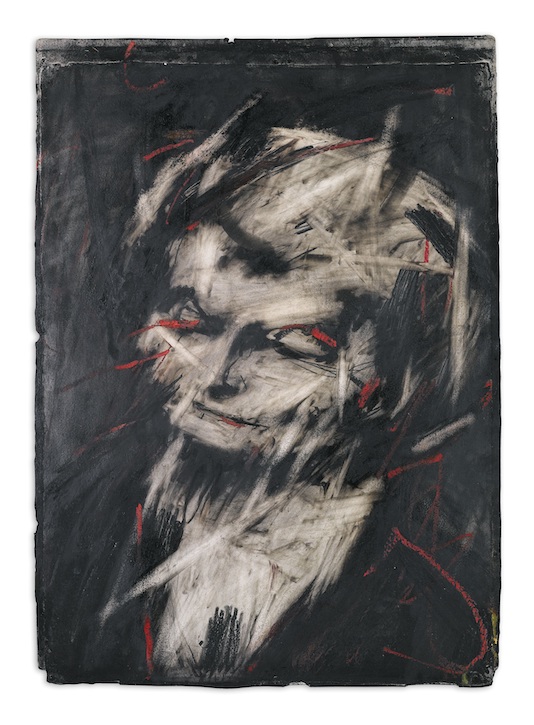
Blurring the line between artist and actor, Auerbach works like a live performer. The opportunity to rub his marks out and draw again at the end of a day's work does not change the fact that he only has one shot within each session, each performance, to deliver his lines. The visibility of this time-sensitive improvisational work with charcoal and chalk becomes a significant part of the profundity of the drawings. As spectators, we instantly acknowledge the lines as reports of precious moments of life that could so easily have escaped capture without a certain focus. Catherine Lampert, a regular sitter of Auerbach's, describes this keenness for looking as an aptitude for 'finding some corner of that person and experience of being with that person.'
Head of E. O. W.
1956, charcoal & chalk on paper by Frank Auerbach (b.1931), private collection 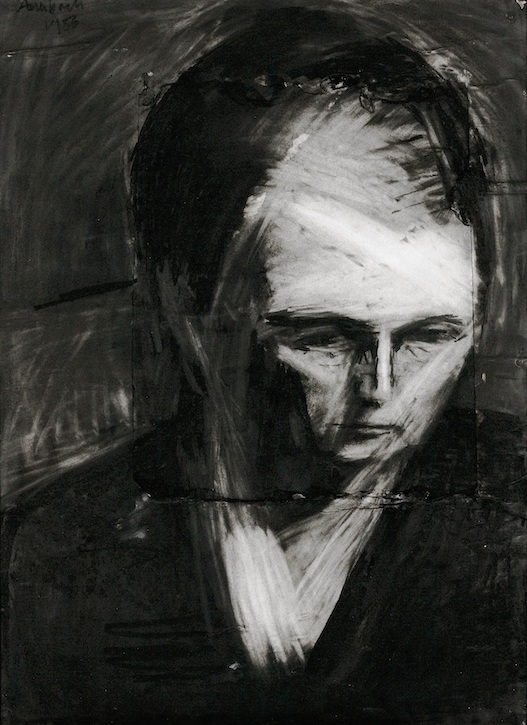
In the early stages of his career, Auerbach used charcoal and chalk because of their affordability. The drawings, however, reveal another reason for their suitability. Their existence on paper intimately relates to the existence of the subjects they depict. In a drawing of Estella Olive West (E. O. W.) composed in 1956, Auerbach draws a triangular frame of chalk on the head. It erases some of the face, while pulling its life-essence, the eyes, out of obscurity, into the room with the spectator. This dramatisation of chalk is extended in Auerbach's self-portraits.
Self-portrait
1958, charcoal & chalk on paper by Frank Auerbach (b.1931), private collection 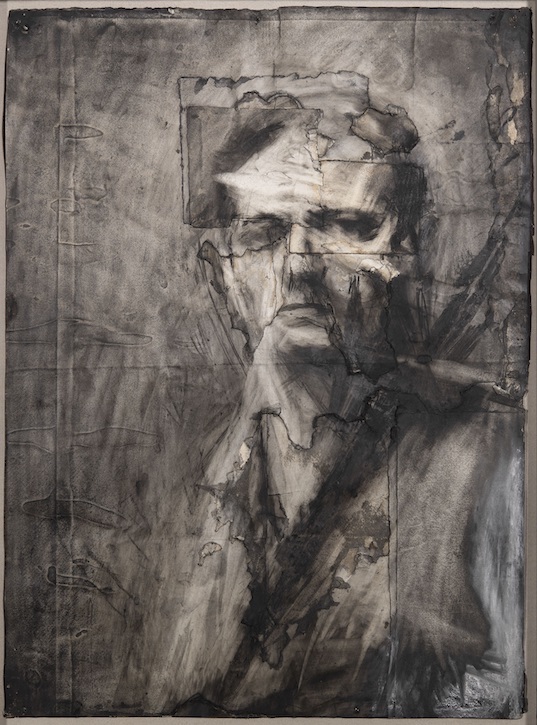
In one, Auerbach isolates and focuses our gaze on his left eye through a system of layering chalk which removes detail and subject matter as it adds to it. Like E. O. W.'s head, where parts of his cheek and brow recede from view and are blurred out, his eye emerges all the clearer for it.
Self-portrait
1959, charcoal & chalk on paper by Frank Auerbach (b.1931), private collection 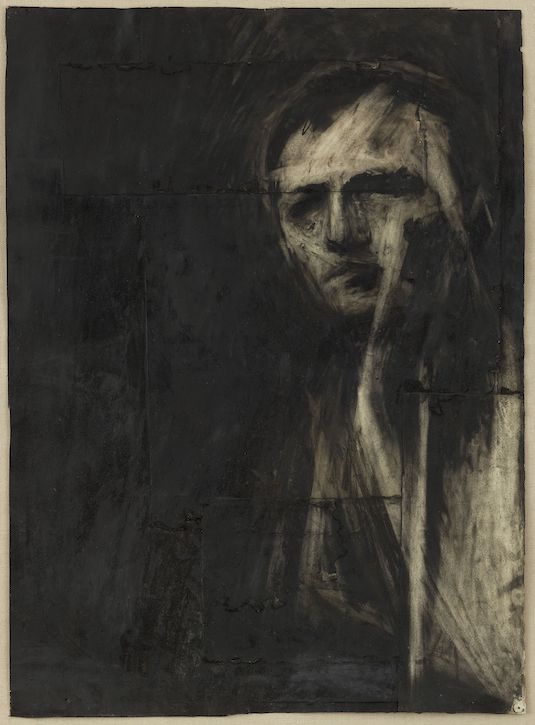
In another, Auerbach positions himself on the right-hand side of the composition, emerging into view, out of darkness. The loud matter of the charcoal is used largely to fill the empty space, and it is the 'empty' chalk marks which cut out and preserve Auerbach's form. In chalk, a substance whose marks on charcoal can easily be mistaken for the eraser or the wiping hand, Auerbach discovers a perfect conveyor of an in-person, face-to-face encounter that entails similar dualities of emergence and recession, loss and gain.
Head of E. O. W.
1959–1960, charcoal & chalk on paper by Frank Auerbach (b.1931), Tate 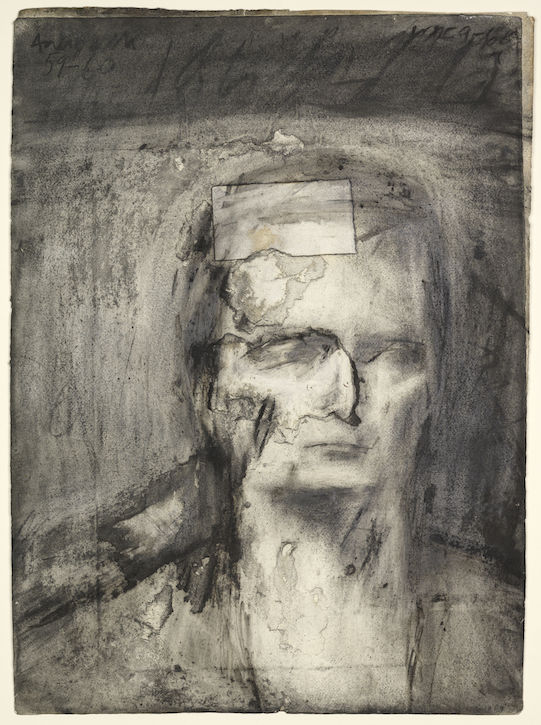
It is ultimately the chalk's combination with charcoal that allows Auerbach to stage the surprises and complexities involved in a human dynamic. Made from the residue of burned wood, Auerbach demonstrates the robustness of this ostensibly fragile material as he applies it layer upon layer, causing it to stress, buckle and tear the paper, before it is patched up in later sessions.
Through the application of charcoal and chalk, Auerbach marks the ebb and flow of damage and repair that characterises our day-to-day interactions with each other. Ultimately, he establishes an ensemble of subject, material and artist, in a way that fulfils the artist's own belief that a work of art should 'find some way of dramatising this corporeal solid reality'.
Gesenkter Frauenkopf (Study of a Woman with Head Bent)
1905
Käthe Kollwitz (1867–1945) 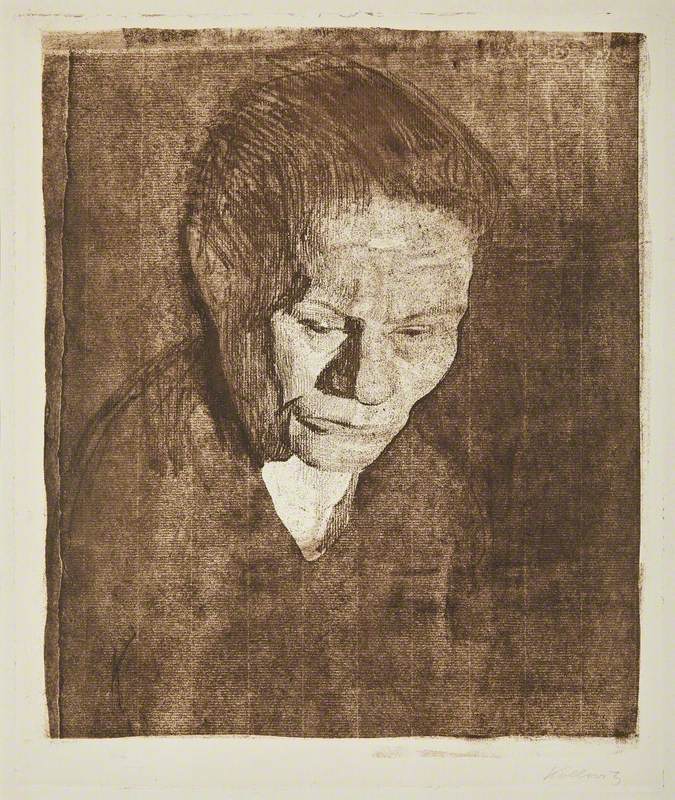
Auerbach learned his craft in view of the work of artists such as Käthe Kollwitz (1867–1945), who realised that drawing and etching provided a more direct way of accessing the truth of the human face. Both artists understood a drawing's ability to be concerned with nothing but the thing that needs to be seen. The drawn line transcends the borders of style, of time and in doing so, speaks to us with clarity, immediacy and familiarity. The drawing has its own language. We should look harder at Auerbach: 'a drawing is a drawing'.
Edward Richards, writer
'Frank Auerbach: The Charcoal Heads' is at The Courtauld, London, until 27th May 2024
This content was funded by the Bridget Riley Art Foundation
Further reading
BBC Radio 4, Profile: 'Frank Auerbach', 25th February 2024
Catherine Lampert and Mark Hallett (eds.), Frank Auerbach: Drawings of People, Yale University Press, 2022
Catherine Lampert and Norman Rosenthal (eds.), Frank Auerbach: Paintings and Drawings 1954–2001, Royal Academy of Arts, 2001
Jackie Wullschläger, 'Artist Frank Auerbach: "I was working at the very edge of my powers"', Financial Times, 2024


